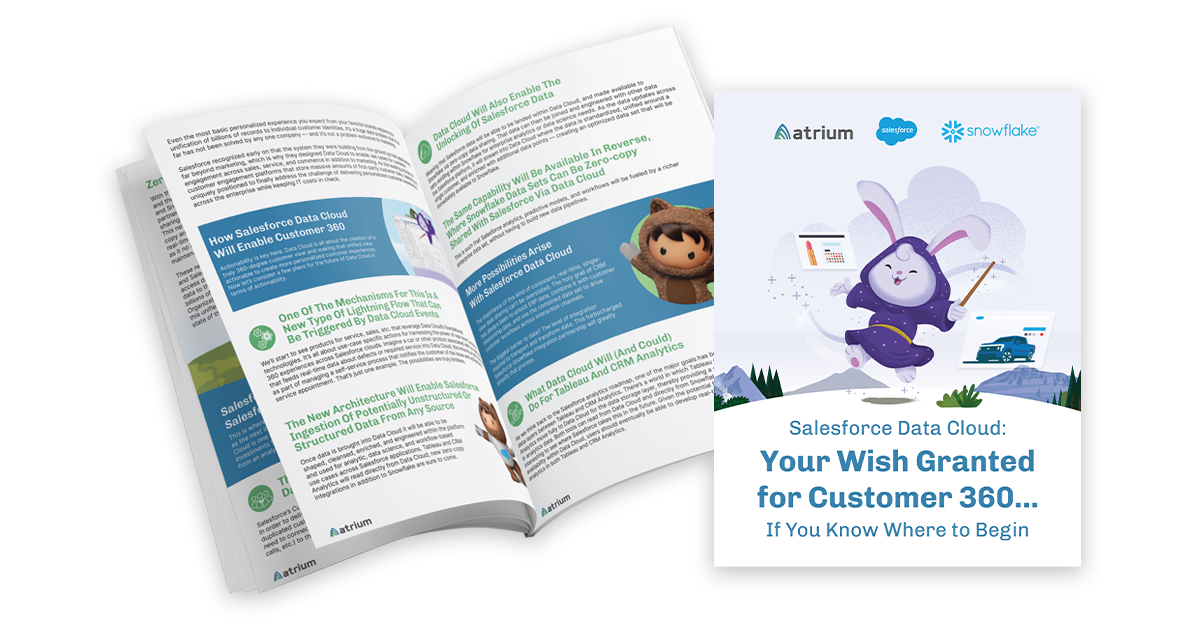Think about it: you can have the most cutting-edge Salesforce system, but if your team isn’t truly ready to use it effectively — if they don’t really get why they should change their old habits — you won’t achieve your goals or maximize your investment. That’s where change management becomes essential. Yet, far too often, people view change management as merely a product implementation task… or, they bring it in far too late.
The Bank of Missouri’s approach is a great example of thinking ahead — they’re looking to impact the greater company culture. We just had an incredible webinar with them, and it really reinforced our beliefs about change management here at Atrium. In case you missed it, you can catch the replay on demand, but I am going to break down some of the highlights for you here.
In our webinar, we explored how The Bank of Missouri is cultivating employee readiness, building a future-ready workforce by prioritizing employee experience, and empowering their team to thrive as the industry evolves. It’s about moving past traditional change management and focusing on adaptability and a growth mindset. As we always emphasize, it’s about the people!
The challenge of change
What sparked The Bank of Missouri’s focus is something many organizations face: the challenge of change. It’s that resistance to letting go of old habits, the “if it ain’t broke, don’t fix it” mentality, which can hinder modernization efforts.
When that mindset surfaces, leaders must assess whether they’re truly preparing their workforce for change. You can train employees on new technologies, but if you don’t help them shift from “change is happening to me” to “I’m part of making this change successful,” initiatives will fall short.
The Bank of Missouri recognized the importance of equipping their people with the right technical skills and mindset to thrive, individually and as a team.
Recognizing resistance
During times of change, there’s that psychological phenomenon, “amygdala hijack.” The amygdala, that part of the brain that processes emotions, memory, and behavioral responses, can take over and make logical thinking difficult when someone perceives a threat.
Now, here’s the funny thing: our brains haven’t quite caught up with the modern world. The amygdala reacts the same way whether we’re facing a life-or-death situation, like being chased by a bear, or a seemingly minor inconvenience, like being told we can’t print our favorite report anymore. To the amygdala, it’s all a threat to our routine and sense of control!
It’s a natural process that leads to resistance. So, employees must understand how change will affect them. Addressing perceived threats head-on helps them apply logic and ease the transition. In our webinar, we discussed some of the red flags that indicated change resistance, such as:
- Employees reverting to old habits despite efficient new processes.
- Employee fatigue and overwhelm due to the pace of change.
- Teams operating in silos, hindering cross-functional initiatives.
- Low engagement with communication, such as low click rates on initiative emails.
These factors all signaled the need to invest in change readiness, or risk innovation roadblocks and stalled growth. However, if you aren’t paying attention to the red flags your people are proudly displaying, you’re effectively setting your Salesforce initiatives up for failure.
What employee readiness actually looks like
What does true employee readiness look like in practice? For The Bank of Missouri, it was about humanizing change and bridging the gap between profit and purpose. Their leadership recognized that genuine readiness extended beyond mere compliance; it required ensuring employees were mentally, emotionally, and skillfully equipped to adapt, contribute to, and actively own transformative efforts. To achieve this, they understood the need to connect their strategic vision to tangible results, partnering with Atrium to translate their goals into a sustainable workforce readiness program.
To effectively cultivate a change-ready workforce, The Bank of Missouri focused on three essential pillars: Leadership & Cultural Alignment, Emotional Intelligence and Change Navigation Training, and the establishment of an Employee Ambassador Program, aka their Journey Advocacy Team.
- Leadership & Cultural Alignment: Atrium guided executives to refine their vision and strategy, focusing on KPIs and establishing a culture of trust, accountability, and ownership.
- Emotional Intelligence and Change Navigation Training: They prioritized addressing emotions during change, creating specialized training for leaders and employees, facilitated company-wide by their Learning & Development team.
- Employee Ambassador Program (Journey Advocacy Team): To foster sustained engagement, they developed employee ambassadors who acted as a feedback loop and change champions, communicating initiatives and helping peers navigate transitions.
Challenges and early wins
As with any transformative initiative, challenges are inevitable. At The Bank of Missouri, they understand that progress, not perfection, is the true measure of success. Each ‘bump in the road’ presents a valuable learning opportunity, reinforcing the importance of a growth mindset.
Though still in its early stages (launched in Q4 2023), the program is already generating significant positive momentum. Journey Advocacy Team members are actively engaging with colleagues, providing valuable updates and resources. Employees are contributing innovative ideas, and leaders are reinforcing training concepts effectively. This collaborative energy is building a strong foundation for sustained success.
To accurately assess the program’s impact, The Bank of Missouri will employ both qualitative and quantitative measurement strategies. Key indicators will include gauging employee sentiment and readiness through surveys, pulse checks, and engagement scores. These tools will offer valuable insights into employee perceptions, beliefs about new initiatives, and comprehension of changes throughout the implementation process.
A baseline survey will serve as a benchmark, and they will monitor employee retention/turnover and track employee adaptation to new processes. Ongoing feedback and observation will inform the program’s evolution.
Ultimately, The Bank of Missouri aims to cultivate a change-ready workforce, facilitating smoother transitions, reducing errors, ensuring consistent processes, and enhancing customer experiences — all outcomes of a positive employee experience.
The big picture
While for some that don’t know the bank intimately, The Bank of Missouri might conjure images of traditional brick-and-mortar branches, they are light years ahead of their competitors in many ways as innovators. Partly because they have figured out the secret sauce for success — the organization’s core strength — lies in its talented team. These individuals are dedicated to empowering customers to achieve financial success.
Recognizing the rapid pace of change within the financial services industry, The Bank of Missouri is committed to equipping its employees with the tools and support necessary to confidently navigate evolving technologies and customer expectations. Their proactive approach to embedding change readiness into their organizational DNA goes beyond mere future-proofing. It fosters an environment where employees don’t simply react to change; they actively embrace and drive it.
Ultimately, The Bank of Missouri’s experience reinforces a crucial truth: effective change management transcends the mere implementation of a new system. It’s about empowering your people to embrace change, thrive within a digital landscape, and unlock the full potential of your Salesforce investment. It’s about ensuring your team is truly prepared to soar.








